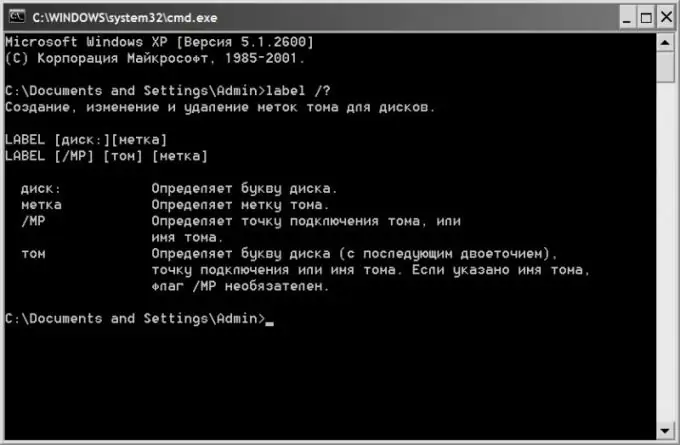A disk label is a kind of alias that is assigned by the user to a physical or virtual volume on some medium on a computer. The operating system and application programs do not need a label to work - they use the letter assigned to the disk. But it is more convenient for a person to work with a disk alias (label). For example, the system and games labels will not allow you to confuse which disk contains games, and which OS files are located, in contrast to the letter designations D and E.

Instructions
Step 1
Use Explorer - this is a standard file manager of the Windows operating system, to launch it, you just need to press win and e on the keyboard at the same time or double-click the "My Computer" shortcut. Explorer provides the ability to change the label of any disk in the simplest way - right-click the icon you are interested in in the application window and select the "Rename" line from the pop-up menu. Pressing f2 can replace using the context menu. The editing mode will be activated and you can start entering a new mark. Press enter to complete the operation.
Step 2
Use the label command if you need to change the disk label from the command line. The command line interface emulator opens like this: press the win + r keys at the same time, enter the letters cmd and click on the OK button. If you need to change the label of the system disk, then type label in the command line and press enter. The terminal window will display two lines with information about the system volume (the letter assigned to it, the current label and the serial number), as well as an invitation to enter the text of the new label. Type the word you want and press enter.
Step 3
In addition to the label command, specify a volume letter and a new label if you need to change the alias of a non-system disk. For example, to label drive G with the newMark label, enter the following command: label G: newMark. After you hit enter, the label of the specified drive will be changed without any additional questions in the terminal.
Step 4
Specify a new label in the corresponding field of the dialog if you need to change it simultaneously with the disk formatting. This dialog appears on the screen after right-clicking a formatted disk and selecting the "Format" line from the context menu. The corresponding field is called “Volume label” here.






